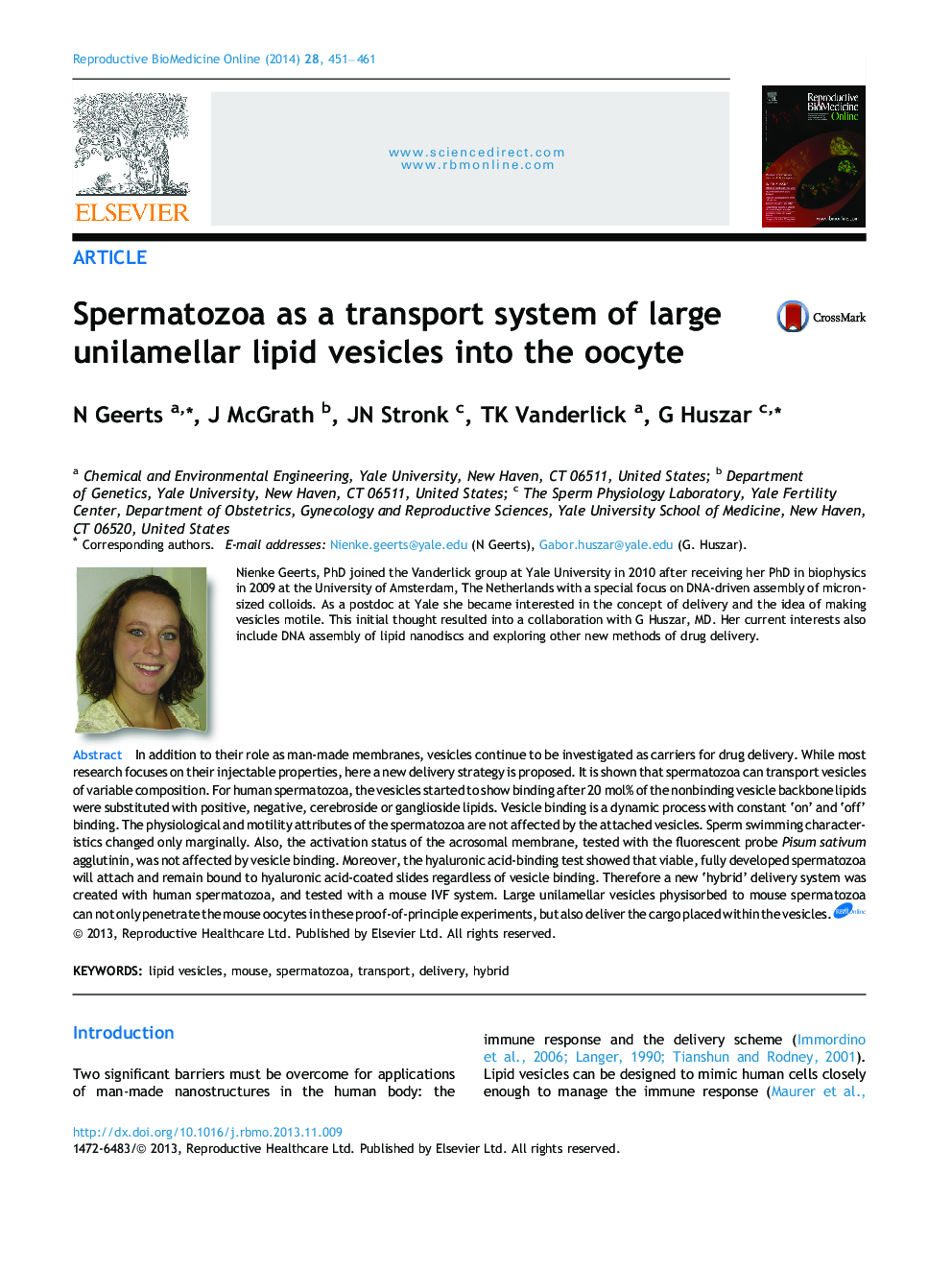| Article ID | Journal | Published Year | Pages | File Type |
|---|---|---|---|---|
| 3970198 | Reproductive BioMedicine Online | 2014 | 11 Pages |
In addition to their role as man-made membranes, vesicles continue to be investigated as carriers for drug delivery. While most research focuses on their injectable properties, here a new delivery strategy is proposed. It is shown that spermatozoa can transport vesicles of variable composition. For human spermatozoa, the vesicles started to show binding after 20 mol% of the nonbinding vesicle backbone lipids were substituted with positive, negative, cerebroside or ganglioside lipids. Vesicle binding is a dynamic process with constant ‘on’ and ‘off’ binding. The physiological and motility attributes of the spermatozoa are not affected by the attached vesicles. Sperm swimming characteristics changed only marginally. Also, the activation status of the acrosomal membrane, tested with the fluorescent probe Pisum sativum agglutinin, was not affected by vesicle binding. Moreover, the hyaluronic acid-binding test showed that viable, fully developed spermatozoa will attach and remain bound to hyaluronic acid-coated slides regardless of vesicle binding. Therefore a new ‘hybrid’ delivery system was created with human spermatozoa, and tested with a mouse IVF system. Large unilamellar vesicles physisorbed to mouse spermatozoa can not only penetrate the mouse oocytes in these proof-of-principle experiments, but also deliver the cargo placed within the vesicles.Vesicles are artificially prepared, small lipid membrane-enclosed sacks that can store substances. As vesicles encapsulate an aqueous solution inside a partly hydrophobic membrane, they can carry both hydrophobic and hydrophilic molecules. Due to their unique properties, liposomes are often used as model systems to create or study artificial cells, as well as drug delivery vehicles. In order to transport nucleic acids, proteins or other cargo, the vesicles should exhibit mobility. In the present paper we propose a new delivery strategy, using the motion of spermatozoa to transport attached vesicles into the oocyte during fertilization. To use spermatozoa as a vesicle-transport system, we have to accomplish three goals. One, the lipid composition of the vesicle membranes needs to be created such that they can bind to the sperm cells. Two, the spermatozoa should still be able to swim with the extra loaded vesicle cargo. And three, the bound vesicles should not inhibit the capability of sperm cells to fertilize. In this study, vesicles started to show binding after 20 mol% neutral lipids were substituted with either positive, negative, cerebroside or ganglioside lipids. A new ‘hybrid’ delivery system has been created in which vesicles are bound to spermatozoa in physiological conditions with no significant alterations in sperm motility and function. Moreover, with IVF experiments in the mouse model, it was confirmed that spermatozoa remained capable of fertilizing while delivering vesicles simultaneously.
